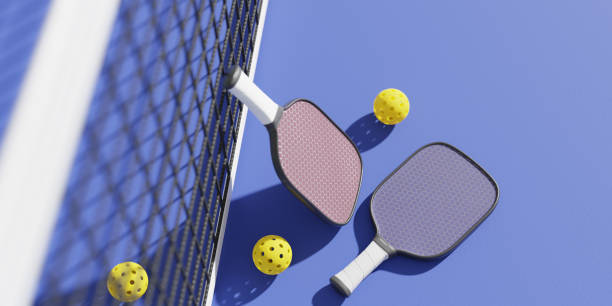Beyond the Court: A Deeper Look into the Growing World of Pickleball
Pickleball—a hybrid sport that combines elements of tennis, badminton, and ping-pong—has been swiftly gaining popularity in recent years. This unconventional sport, with its quirky name and infectious spirit, is a fascinating topic, ripe for exploration.

In the early 1960s, pickleball was invented on the whimsical grounds of Bainbridge Island, Washington. It began as a simple backyard pastime created by three friends—Joel Pritchard, Bill Bell, and Barney McCallum—aiming to entertain their bored children. The game, named after the Pritchards’ dog Pickles, who had a knack for running off with the ball, has since grown into an international sensation with millions of players worldwide.
Pickleball’s Unstoppable Surge
In the United States alone, the number of pickleball players has skyrocketed, with the Sports & Fitness Industry Association (SFIA) recording a 21.3% increase in participation from 2019 to 2020. This surge in popularity is not confined to the US; countries like Canada, Spain, and India are also witnessing a growing interest in the sport.
The reasons behind pickleball’s rising popularity are manifold. The game is easy to learn, making it accessible to people of all ages and skill levels. It is also a social sport, encouraging interaction and camaraderie among players. Furthermore, pickleball’s lower-impact nature makes it a safer alternative for older adults or those recovering from injuries.
The Science Behind the Swing
Effective pickleball play requires a blend of strategy, agility, and coordination. A 2018 study published in the Journal of Science and Medicine in Sport highlighted the sport’s potential for improving cardiovascular health, muscular strength, and flexibility.
However, like any sport, pickleball presents its own set of challenges. The game’s rapid pace can lead to overuse injuries if not played with proper technique. Additionally, as a relatively new sport, pickleball lacks the extensive body of research that informs training and injury prevention in more established sports.
Pickleball in the Professional Arena
While pickleball was initially conceived as a pastime, it has evolved into a competitive sport with a professional league—the Professional Pickleball Association—and prestigious championships. The prize money for these tournaments can reach up to $750,000, reflecting the sport’s growing status and profitability.
The Future of Pickleball
As pickleball continues to captivate a diverse range of players, the sport’s future looks promising. With increased media coverage, investment in professional leagues, and the potential for inclusion in future Olympic Games, pickleball is poised to become a staple in the sports landscape.
Whether you’re an avid athlete or a casual sports enthusiast, pickleball offers a refreshing, engaging, and accessible way to stay active. Its intriguing history, rapid growth, and potential for future development make it a fascinating topic within the ever-evolving world of sports.




